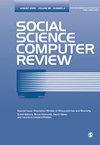四种CAQDAS工具的显著差异:组织实时Twitter数据的探索
IF 3
2区 社会学
Q2 COMPUTER SCIENCE, INTERDISCIPLINARY APPLICATIONS
引用次数: 0
摘要
支持实时数据提取的定性数据分析软件(QDAS)软件包是一项相对较新的创新。很少有人写关于这些QDAS软件包功能差异的研究含义,以及这些差异如何有助于对比分析机会。因此,早期研究人员在选择适合Twitter分析的QDAS时可能会遇到困难。针对这两种方法上的差距,本文介绍了支持实时Twitter数据导入的四种QDAS工具(即ATLAS)的软件比较。ti™,NVivo™,MAXQDA™和QDA Miner™。作者的这些工具的QDAS特性清单突出了它们在功能上的许多差异。通过数据导入和源自相同查询和代码本的主题编码来测试这些差异。在广泛的定性分析过程的第一个活动“组织数据”中,比较了作者所得到的QDAS经验。尽管QDAS定价存在很大差异,但令人惊讶的是,这些工具在定性研究组织方面的差异有多大。值得注意的是,为同一查询提取的数据量不同,主要是由于四个QDAS可以提取的数据类型和数量的差异。每个人如何支持视觉组织的变化也塑造了研究人员熟悉Twitter用户和他们的Twitter内容的机会。这种差异表明,选择一个合适的QDAS来组织实时Twitter数据必须与研究人员的重点:ATLAS相吻合。它适用于专注于整理非结构化数据以进行个人意义生成的学者,而MAXQDA适用于混合方法研究人员。QDA Miner易于学习的用户界面适合高效的方法实施,而NVivo支持相对快速的tweet内容分析。这些发现可能有助于指导Twitter社会科学研究人员和其他QDAS工具选择。未来的研究可以探索其他定性研究阶段的差异,或者对比各种微博服务的数据提取路线。本文章由计算机程序翻译,如有差异,请以英文原文为准。
Noteworthy Disparities With Four CAQDAS Tools: Explorations in Organising Live Twitter Data
Qualitative data analysis software (QDAS) packages that support live data extraction are a relatively recent innovation. Little has been written concerning the research implications of differences in such QDAS packages’ functionalities, and how such disparities might contribute to contrasting analytical opportunities. Consequently, early-stage researchers may experience difficulties in choosing an apt QDAS for Twitter analysis. In response to both methodological gaps, this paper presents a software comparison across the four QDAS tools that support live Twitter data imports, namely, ATLAS.ti™, NVivo™, MAXQDA™ and QDA Miner™. The authors’ QDAS features checklist for these tools spotlights many differences in their functionalities. These disparities were tested through data imports and thematic coding that was derived from the same queries and codebook. The authors’ resultant QDAS experiences were compared during the first activity of a broad qualitative analysis process, ‘organising data’. Notwithstanding large difference in QDAS pricing, it was surprising how much the tools varied for aspects of qualitative research organisation. Notably, the quantum of data extracted for the same query differed, largely due to contrasts in the types and amount of data that the four QDAS could extract. Variations in how each supported visual organisation also shaped researchers’ opportunities for becoming familiar with Twitter users and their tweet content. Such disparities suggest that choosing a suitable QDAS for organising live Twitter data must dovetail with a researcher’s focus: ATLAS.ti accommodates scholars focused on wrangling unstructured data for personal meaning-making, while MAXQDA suits the mixed-methods researcher. QDA Miner’s easy-to-learn user interface suits a highly efficient implementation of methods, whilst NVivo supports relatively rapid analysis of tweet content. Such findings may help guide Twitter social science researchers and others in QDAS tool selection. Future research can explore disparities in other qualitative research phases, or contrast data extraction routes for a variety of microblogging services.
求助全文
通过发布文献求助,成功后即可免费获取论文全文。
去求助
来源期刊

Social Science Computer Review
社会科学-计算机:跨学科应用
CiteScore
9.00
自引率
4.90%
发文量
95
审稿时长
>12 weeks
期刊介绍:
Unique Scope Social Science Computer Review is an interdisciplinary journal covering social science instructional and research applications of computing, as well as societal impacts of informational technology. Topics included: artificial intelligence, business, computational social science theory, computer-assisted survey research, computer-based qualitative analysis, computer simulation, economic modeling, electronic modeling, electronic publishing, geographic information systems, instrumentation and research tools, public administration, social impacts of computing and telecommunications, software evaluation, world-wide web resources for social scientists. Interdisciplinary Nature Because the Uses and impacts of computing are interdisciplinary, so is Social Science Computer Review. The journal is of direct relevance to scholars and scientists in a wide variety of disciplines. In its pages you''ll find work in the following areas: sociology, anthropology, political science, economics, psychology, computer literacy, computer applications, and methodology.
 求助内容:
求助内容: 应助结果提醒方式:
应助结果提醒方式:


